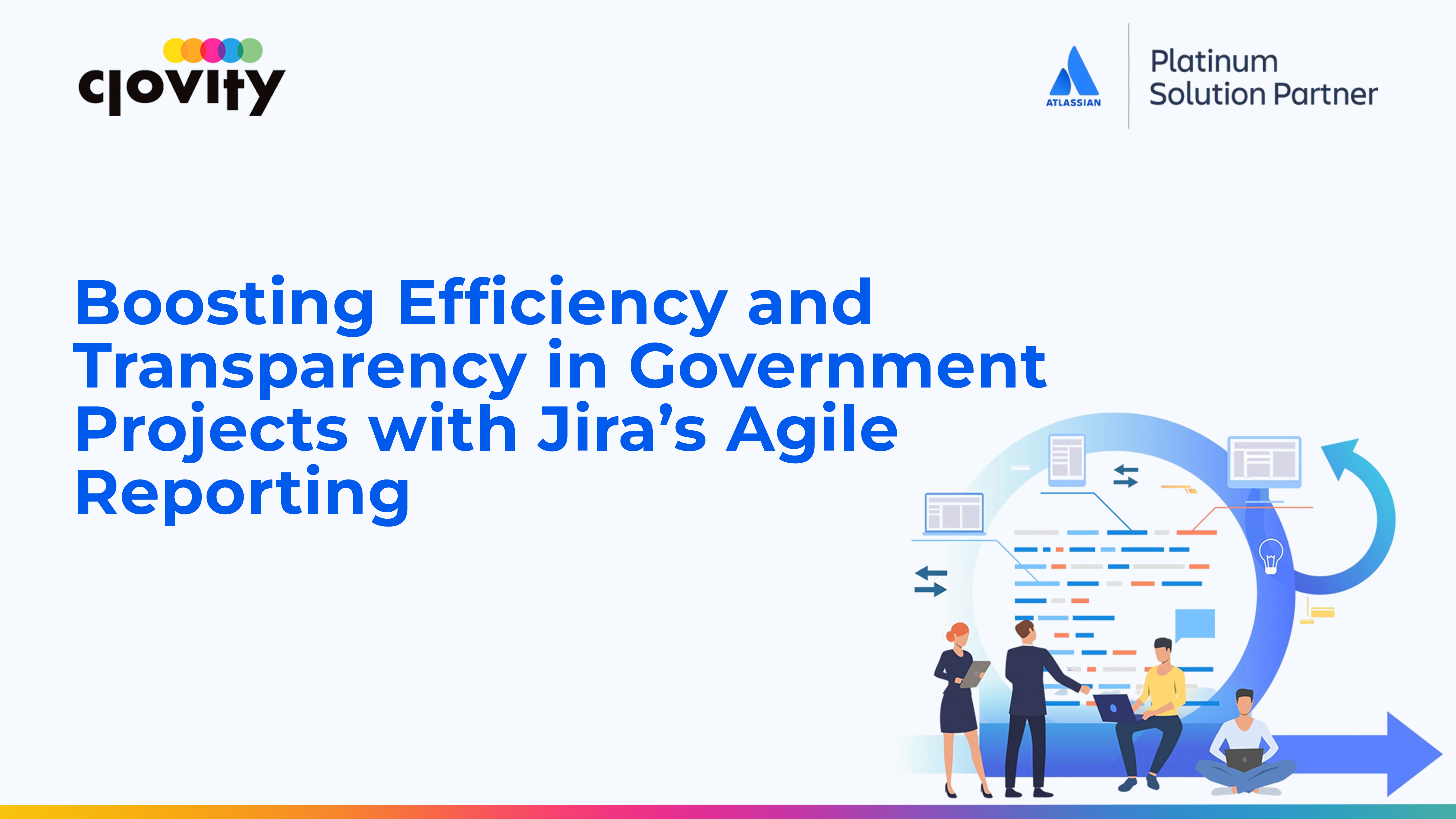Government teams face a unique set of challenges when managing projectsâtight budgets, strict oversight, evolving policies, and a responsibility to deliver measurable outcomes. Whether the project involves IT modernization, regulatory compliance, procurement, or inter-agency collaboration, visibility and accountability remain top priorities.
In recent years, many agencies have adopted agile methodologies to improve how they plan, execute, and review project work. Jira, Atlassianâs flagship project tracking tool, has become a widely used platform for managing these efforts. But beyond issue tracking and workflow automation, one of the platformâs most useful capabilities for public sector teams is its reporting functionality.
This blog explores how government organizations can use Jiraâs agile reporting tools to improve project transparency, stay aligned with compliance requirements, and deliver consistent progress updates to internal and external stakeholders.
Agile Reporting in a Government Context
Agile reporting may have its roots in software development, but its core principlesâtracking progress, surfacing risks, and enabling course correctionâapply equally well to public sector initiatives.
A well-configured Jira instance can help answer questions like:
- How close are we to completing this initiative?
- Are we meeting milestones on time?
- What risks or blockers are slowing things down?
- How are teams allocating their time and resources?
- What work has been completed, and what still requires approval?
Jira enables teams to gather this information in real-time through dashboards, burndown charts, custom filters, and built-in reports.
For government projectsâwhere visibility into outcomes and processes is essentialâthis real-time access to project data helps support both operational decision-making and regulatory transparency.
Key Reporting Features in Jira
Jira offers a range of reporting tools designed to support agile planning and execution. Letâs explore a few that are particularly relevant for public sector work.
1. Dashboards
Dashboards are customizable spaces where users can view the data that matters most to them. You can build dashboards tailored to:
- Project managers tracking tasks and timelines
- Executive stakeholders monitoring high-level milestones
- Compliance officers reviewing workflow status and approvals
Popular dashboard elements (known as gadgets) include pie charts, bar charts, issue statistics, sprint health, and activity streams.
For example, a procurement team might have a dashboard showing:
- Number of open vs. completed RFP reviews
- Time taken to process vendor submissions
- Tasks currently awaiting legal or financial approval
By organizing this information visually, teams can make better decisions and identify delays early.
2. Burndown and Burnup Charts
If your agency works in sprints or uses iterative planning, these charts are essential. A burndown chart tracks how much work remains in a sprint or release, while a burnup chart tracks how much work has been completed.
This makes it easier to:
- Monitor whether work is progressing as planned
- Forecast if deadlines are at risk
- Share updates with non-technical stakeholders in a digestible format
Many government teams using Scrum or hybrid agile models rely on these charts for sprint retrospectives and mid-cycle reviews.
3. Cumulative Flow Diagrams
A cumulative flow diagram shows the number of issues in each workflow status over time. This helps teams identify bottlenecks or uneven workloads.
For instance, if tasks are piling up in a âPending Approvalâ column, it could signal the need for additional resources or process adjustments.
In government workflowsâwhere approvals are a common source of delayâcumulative flow diagrams offer a practical way to detect inefficiencies.
4. Control Charts
Control charts allow teams to visualize the cycle time for tasksâthat is, how long it takes for work to move from start to completion.
This can be used to:
- Analyze performance over time
- Benchmark teams or departments
- Identify spikes in completion times that may warrant further review
If your agency is under performance-based funding requirements, these metrics can feed directly into progress reports.
Custom Filters and JQL
Jira Query Language (JQL) allows you to build custom queries that return exactly the issues or tasks youâre looking for. You can then use these filters to populate dashboards, export reports, or build saved searches for regular use.
Here are a few examples of how government teams might use JQL:
- Find all tasks in a given project that are overdue
- View all issues labeled as âpolicy_reviewâ and assigned to the legal team
- Filter tasks that were resolved within the last 30 days for monthly reporting
- Highlight issues in a specific funding program or contract phase
Custom filters ensure that teams donât waste time digging through noiseâthey see exactly whatâs relevant to their responsibilities and deadlines.
Enhancing Oversight with Jira Service Management (JSM) Reports
Many agencies also use Jira Service Management to handle service requestsâwhether for IT support, procurement inquiries, HR questions, or citizen services.
JSM includes specialized reports, such as:
- SLA performance reports (e.g., time to first response, time to resolution)
- Queues and workload distributions
- Trends in request types over time
- Escalation rates
These reports help ensure services are meeting internal commitments or externally defined service agreements.
In a government environment, JSM reports are particularly useful for:
- IT help desks in large departments
- HR teams managing employee onboarding/offboarding
- Grants or funding departments managing application intake and review
- Legal departments managing FOIA requests or contract reviews
Final Thoughts
Agile tools arenât just for software teams anymore. Theyâre increasingly critical in government project management, where timelines, deliverables, and accountability need to be balanced carefully.
Jiraâs reporting featuresâwhen used intentionallyâcan help public sector teams monitor progress, track commitments, and demonstrate value to stakeholders. Whether itâs meeting internal SLAs, supporting external audits, or preparing executive updates, Jira gives teams the visibility they need to stay on course.
đ§ Contact us at sales@clovity.com or visit đ atlassian.clovity.com to get started today.


